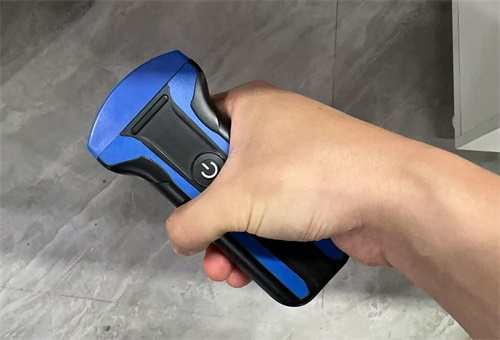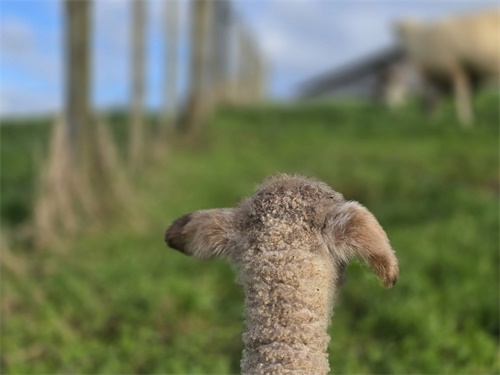In the evolving world of veterinary diagnostics, point-of-care ultrasound (POCUS) has emerged as a game-changing tool, especially in field settings where time, precision, and portability are paramount. Among the innovations driving this transformation is the handheld ultrasound device—compact, lightweight, and increasingly sophisticated. Veterinary ultrasound experts worldwide are recognizing its critical role in real-time assessments, particularly for farm animals, companion animals, and wildlife. This article explores what leading experts say about the use of handheld ultrasound for POCUS exams, with insights from clinical practice, field application, and emerging research.

The Rise of POCUS in Veterinary Practice
POCUS, or Point-of-Care Ultrasound, refers to the use of ultrasonography at the patient's side to quickly acquire diagnostic images that can guide immediate clinical decisions. While this method has long been integrated into human medicine, its adoption in veterinary practice—especially outside of traditional hospital settings—has gained remarkable momentum in recent years.
Veterinarians in North America, Europe, and Australia have been particularly active in developing protocols for using POCUS in large and small animals. Experts from institutions such as the University of California Davis and the Royal Veterinary College in the UK have promoted POCUS not as a replacement for full diagnostic imaging, but as a valuable adjunct to physical examination, allowing faster triage, diagnosis, and monitoring.
In this context, the rise of handheld ultrasound devices has been revolutionary.

What Makes Handheld Ultrasound Ideal for POCUS?
Handheld ultrasound systems combine portability with real-time imaging capabilities, empowering veterinarians to conduct field diagnostics, monitor animal health, and even assist with emergency interventions. Experts identify several key reasons why handheld ultrasound fits perfectly into the POCUS paradigm:
1. Portability and Accessibility
Unlike traditional cart-based machines, handheld devices can be used in barns, stables, rural clinics, or even in remote wildlife conservation settings. They are ideal for fieldwork and emergencies, such as assessing colic in horses, evaluating lung sounds in calves, or identifying pregnancy in sheep and goats without needing a full clinic setup.
2. Time-Efficiency
Dr. Sarah Naylor, a bovine practitioner in New Zealand, notes:
"In field settings, time is everything. A handheld ultrasound lets me perform a scan right at the chute, decide whether a cow needs treatment or culling, and move on without delay."
POCUS is meant to support fast clinical judgment, and handheld units deliver this without sacrificing diagnostic quality.
3. Ease of Use and Learning
POCUS exams focus on targeted diagnostics—such as checking for free abdominal fluid, cardiac motion, or bladder volume—rather than full anatomical surveys. This simplicity makes handheld devices particularly suitable for field veterinarians, students, and even paraprofessionals trained for specific protocols.
Training programs now commonly include portable ultrasound applications. The University of Florida and the Ontario Veterinary College are known for integrating handheld POCUS into their curriculum for students.

Key Veterinary Applications of Handheld POCUS
Veterinary experts categorize the most common POCUS applications into five primary fields:
A. Reproductive Health
Pregnancy diagnosis: Small ruminants and swine breeders use handheld ultrasound to confirm pregnancy in early gestation.
Fetal viability: Practitioners use it to observe fetal heartbeat and movement, vital for evaluating reproductive success.
B. Emergency and Critical Care
FAST scans (Focused Assessment with Sonography for Trauma) help in detecting fluid in the thoracic or abdominal cavity.
Heart and lung exams: Quickly assessing cardiopulmonary status is critical in emergency care, especially in dogs, cats, and calves.
C. Musculoskeletal Examinations
Lameness evaluations in horses or soft tissue injury monitoring in performance dogs have benefited from quick scans to guide further treatment.
D. Abdominal Organ Assessment
Assessing the bladder for obstruction, checking for gastrointestinal stasis in rabbits, or evaluating liver and kidney size are all feasible using handheld ultrasound.
E. Guided Procedures
Whether aspirating fluid or injecting medication, real-time visualization helps increase the success rate and minimize complications.

What Experts Say About Limitations
Despite widespread praise, experts are careful to mention the limitations of handheld ultrasound:
Image resolution is typically lower than that of larger machines.
Depth penetration may be limited, especially for large animal abdominal scans.
Battery life and screen size can be restricting during prolonged use.
Dr. Erik Hekman, a veterinary internal medicine specialist in the Netherlands, explains:
"Handheld devices work best when used for a focused purpose. If you want high-resolution imaging of complex structures like the bovine ovary or equine tendon, you may still need a full-size system."
Nonetheless, ongoing improvements in transducer design, image processing, and software are steadily closing the gap between handheld and larger ultrasound systems.
Case Insights: Handheld Ultrasound in Action
1. Swine Reproduction in Germany
In commercial pig farms, veterinarians use handheld POCUS to detect early pregnancy and reduce non-productive sow days. On-farm technicians are trained to handle the device, conduct the scan, and make real-time decisions on whether to rebreed or cull.
2. Calf Health in Canada
In cold climates, respiratory illness in calves is a significant concern. Canadian vets use POCUS to scan lungs for consolidation or fluid. Portable ultrasound helps avoid unnecessary antibiotic use by identifying cases that truly require intervention.
3. Equine Colic in Australia
Outback veterinarians facing hours-long drives use handheld ultrasound to assess horses with colic. Identifying free fluid, intestinal dilation, or peristalsis allows them to decide whether to treat on-site or refer the horse to a distant surgical facility.

Future Outlook: Where Is Veterinary POCUS Heading?
The global veterinary community anticipates that handheld ultrasound for POCUS will become standard in mixed animal and large animal practice. With the help of AI-powered image enhancement, wireless connectivity, and cloud-based data storage, the next generation of portable ultrasound tools will offer:
Remote consultation with specialists via tele-ultrasound
Integrated training modules in real-time
Cloud-based case archiving for herd health tracking
Additionally, the cost of handheld systems has become more accessible. Devices once priced beyond the reach of small practices are now available under $3,000, expanding their global use.
Conclusion
Handheld ultrasound for POCUS exams is no longer a futuristic tool—it is a present-day necessity in modern veterinary medicine. Experts agree that its impact spans diagnostics, fieldwork, emergency care, and herd management. While it cannot replace full diagnostic systems in every scenario, its benefits in portability, efficiency, and immediacy are irreplaceable.
As the technology continues to advance and more veterinarians gain proficiency in POCUS, handheld ultrasound will remain at the forefront of animal healthcare—bridging the gap between quick clinical insight and evidence-based decisions.
References
Freeman, L.M. (2022). Veterinary Point-of-Care Ultrasound: An Evolving Landscape. Journal of Veterinary Emergency and Critical Care, 32(4), 215–229.
Hekman, E., et al. (2023). Handheld Ultrasound in Large Animal Medicine: Opportunities and Challenges. Veterinary Clinics of North America: Food Animal Practice.
Naylor, S. (2021). Field Ultrasonography for Reproductive Management in Dairy Herds. New Zealand Veterinary Journal.
Veterinary Information Network (VIN). (2024). “POCUS Training for Vets.” https://www.vin.com
Royal Veterinary College. (2023). “POCUS for Farm and Companion Animals.” https://www.rvc.ac.uk
University of California Davis – Veterinary Medicine. (2024). “Veterinary Ultrasound and POCUS.” https://www.vetmed.ucdavis.edu/hospital/ultrasound
tags:


